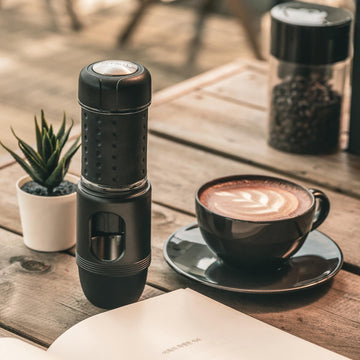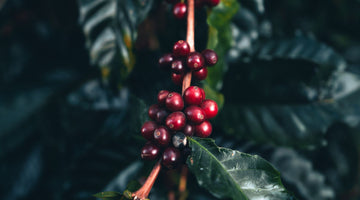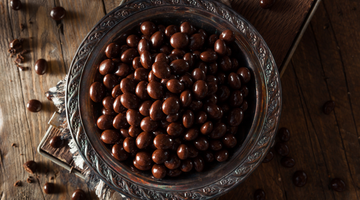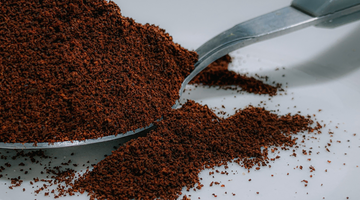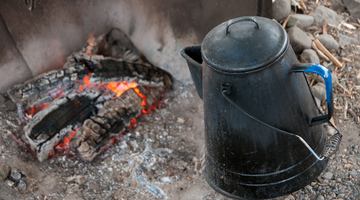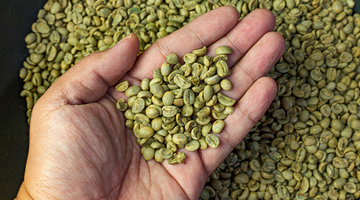Caffeine alone is not responsible for us getting up early—it's more complex than that. How coffee beans travel from rich fields toward your drinking mug is a journey as rich as the delicious coffee it brews.
The birthplace of coffee: Ethiopia and beyond
It is said that a man named Kaldi, who used to take care of goats, was the first person to discover coffee in Ethiopia. While grazing, Kaldi observed his goats being more lively after eating certain strange red fruits. After sampling the berries, he became as active as his animals. Today, the magical seed has gone beyond regions and habits in different corners of the world.

The more people wanted this energizing drink, the more it was grown. The Coffee Belt is an expanse of land between the Tropics of Cancer and Capricorn, where coffee plants from here are moved to new areas around the globe. This belt includes parts of Latin America, Africa, and Asia, where the climate is just right—warm, with plenty of rain and rich soil.
How coffee beans are grown
Coffee comes from shrubs that love the shelter of high altitudes and thrive in steady temperatures. The plants are pretty finicky and need just the right amount of sun and shade. There are two main varieties that rule the coffee world: Arabica and Robusta. Arabica is the sophisticated, aromatic type preferred by connoisseurs, while Robusta is bolder, with a kick strong enough to wake the dead and a penchant for easier growing conditions.
Farmers typically plant seeds in large beds in shaded nurseries. After sprouting, the seedlings are moved to individual pots and later planted in fields. It takes about 3-4 years for a coffee plant to begin producing fruits, known commonly as coffee cherries. These fruits are initially green and turn bright red as they ripen—ready for picking.
From farm to processor: harvesting and processing coffee

Harvesting coffee is a careful and labor-intensive process, often done by hand to ensure no bean before its time finds its way into your cup. Once picked, the beans go through processing, crucial in defining the coffee's final flavor. The beans can be processed in two main ways:
- Dry processing, where whole cherries are dried in the sun before extracting the beans.
- Wet processing, where the pulp of the cherry is removed before the bean is dried. This method enhances the bean's inherent qualities, making for a cleaner, brighter cup.
Roasting: Transforming beans into brew-ready delights

Once processed, the beans are still not ready to make their way into your coffee machine. They need roasting, where green coffee beans are transformed into the shiny, aromatic beans we know and love. Roasting is a heat process that turns coffee into the fragrant, dark brown beans used in brewing. Light, medium, and dark roasts not only give beans their unique flavors but also influence their caffeine levels.
Brewing perfection with STARESSO
Now, let's talk brewing. The quality of the bean is paramount, sure, but so is how you brew it. That's where STARESSO shines. The STARESSO Portable Espresso Machine makes brewing top-notch coffee a breeze, no matter where you are. It's compact and portable, meaning you don't need a fancy setup or even electricity to brew a perfect shot. Whether you're camping or cozying up at home, it lets you craft barista-level espresso effortlessly, preserving all the subtle flavors and aromas of your beans.

From the ancient highlands of Ethiopia to your modern morning ritual, every coffee bean has a tale to tell. Understanding where coffee beans come from not only adds depth to each sip but also enhances your appreciation for every cup. And with STARESSO's help, you can ensure that each bean's journey ends as impressively as it began.
Frequently asked questions about where coffee beans come from
Where do the best coffee beans come from?
Coffee beans are grown in over 70 countries within the Coffee Belt. Popular regions include Ethiopia, Colombia, Brazil, Vietnam, and Indonesia. Each region offers beans with unique flavor profiles, influenced by the local climate and soil conditions.
What is the difference between Arabica and Robusta coffee beans?
Arabica beans are known for their sweet, soft taste and higher acidity, often preferred for black coffee. They are primarily grown in Latin America and higher elevations. Robusta beans, on the other hand, have a stronger, harsher taste with a grainier flavor and are often used in espresso blends for added body and crema production. They thrive in lower altitudes and warmer climates, such as in parts of Africa and Asia.
How can I tell if my coffee beans are fresh?
Fresh coffee beans have a strong, pleasant aroma and a slight oily sheen. They should feel dense and hard. If your beans are stale, they will have a more muted smell and appear dry and brittle. Grinding and brewing them with the STARESSO Discovery Grinder and STARESSO Portable Espresso Machine shortly after purchase is a great way to ensure freshness.
